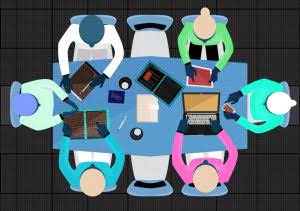Inventory Standard Costing Fundamentals & Other Current Trends
Content

This should provide an excellent range to quickly establish a selling price. The SSCM is more involved with production parameters that may come from various expertise in the organization but considers better metrics and unforeseen difficulties the production profitability model doesn’t offer. Standard costing involves the creation of estimated (i.e., standard) costs for some or all activities within a company. The core reason for using standard costs is that there are a number of applications where it is too time-consuming to collect actual costs, so standard costs are used as a close approximation to actual costs. Standard costs are sometimes referred to as preset costs because they are estimated based on statistics and management’s experience. Basically, management calculates how much each step in the production process should cost based on the market value of goods, median wages paid per employee, and average utility rates.

It is based on past experience and is referred to as a common sense cost, reflecting the best judgment of management. The aprons are easy to produce, and no apron is ever left unfinished at the end of any given day. This means that DenimWorks will never have work-in-process https://www.bookstime.com/ inventory at the end of an accounting period. Once you’ve determined the standard cost of each of these, add them together to get the overall standard cost. Managers can then begin to investigate why the variable occurred and how to prevent it from happening in the future.
Revising Costing As Prices Rise
Planned cost is a key for effective cost control which is not provided by historical cost concepts. The standard costing system was developed to overcome the drawbacks of the historical costing system. Since historical costing deals only with the actual costs incurred, it is not an effective device of cost control. Fitrix Standard Costing is an application in the Item Management family.

Therefore, the production will be able to maximize their capacity which almost impossible to happen in real life. The difference between standard and actual cost must be investigated and it will use as the basis for future standard cost. In daily operations, there will change so our costing must be reflected with those changes. Once standards are fixed development of cost, most of the clerical work is reduced. Thus it is an economical method of costing and brings efficiency in production. When standards are fixed, the performance of various departments e.g., production, sales, purchase etc., is considered. In this way, standard costing enables coordination among all departments.
Standard Costing Advantages
The shipping costs in a separate GL account to examine them side by side. I have seen this make quite a significant impact on the bottom line. This is an example of a summary profitability of 2 production runs. It’s important to understand that production profit contribution and SSCM models are not mutually exclusive and may co-exist for plastics processors.
- By rule, no burden will be charged to the job when standard costs are used.
- The false picture leads to incorrect pricing decisions and whether a product should be discontinued.
- Standard costing over-focuses on artificial unfavorable variances and not the actual cost of production and profitability.
- The $100 credit to the Direct Materials Price Variance account indicates that the company is experiencing actual costs that are more favorable than the planned, standard costs.
- FIFO, or First In, First Out, refers to recording the oldest inventory items to be sold first.
The cost accountant may periodically change the standard costs to bring them into closer alignment with actual costs. Purchase various parts at standard prices (total standard is $600, but vendor invoice is only $500).
Standard Costing System
It’s the amount that the company should have to pay to produce a good. Analysis of variances between standard costs and actual costs provide vital information useful in improving and maintaining efficiency of operations. The company usually conduct the testing to estimate a proper standard cost of each production unit. With this cost, they will be able to calculate the inventory valuation, cost of goods sold, which will impact the profit during the period. More important, it helps the management to set a proper price and compete in the market. One pitfall of Standard Costing is that the price of raw materials can fluctuate.
Standard costs are developed before the new fiscal year starts through a series of steps by the accounting team. Finance spends considerable effort with each business function to re-estimate the cost of producing a product. Business leaders must take a pause and really assess whether a standard cost system is producing accurate results and delivering what they need when they need, and how they need it. Nonreporting of certain variances Workers do not always report all exceptions or variances.
Inventory – Finished goods$250Inventory – Raw materials $160Direct labor absorbed $50Overhead absorbed $40Often at the end of a reporting period, the absorption accounts will not offset the expense. At this point, the example company is currently over absorbed with respect to labor. This means there is $50 absorbed while incurring only $40, which is the actual cost incurred. The current income statement is showing a net $10 credit balance. If this is the only item the company produces, and the inventory is not sold, the company would be incorrectly over costed and not accurately reflecting the proper inventory value on its balance sheet at period end. The process to account for these variances is through a capitalized variance account .
What Are Standard Costs? Theyre Estimates
With standard costing, the general ledger accounts for inventories and the cost of goods sold contain the standard costs of the inputs that should have been used to make the actual good output. Differences between the actual costs and the standard costs will appear as variances, which can be investigated. For example, if the direct materials price is $10 and the standard quantity is 20 pounds per unit, you would multiply $10 by 20 to get $200. This would be the standard cost for the direct materials only.
To determine these costs, you’ll need to multiply the rate of each by the quantity . Direct Labor – It is derived by multiplying the quantity of each of the labor with the per hour labor cost.
Planning And Budgeting
Hence, it is useful to understand the meaning of standard cost. Importantly, comparison of actual cost with standard cost shows the variance. When correctly analyzed, this shows how to correct adverse tendencies. In the event of variances, managers are allowed to rectify any discrepancies. This means they can be more aware of spending habits in the future and strive for little to no variances.
- Profit variances may be small or even non-existent.BUTinventories can easily become very inflated.
- Weighted average, or moving average, is one of the most popular costing methods.
- In other words, only consider using the direct cost such as material, direct cost of labor, and direct overhead costs.
- Obviously ABC has some cons with resource and timing needs, but accuracy is very important, especially in our current environment.
- It is predetermined in the planning stage, which means that the company prepares this cost base on the design and product’s feature even before the actual production.
- This code is used record the offset to the direct cost adjustment.
An unfavorable variance occurs when actual costs are higher than the standard. It will be a tool to access management performance; the variance between actual and estimate can show how good they are performing. However, setting standard costs must be involved from various parts in order to ensure transparency. We have to ensure that it is not overestimated as it will not force the production team to reduce cost. On the other hand, setting too low cost will put too much pressure on them to archive the result which will never happen. Once you determine the cost of your raw materials and labor, you know what your production costs will be as long as quotas are met.
Example Of Standard Cost
Harold Averkamp has worked as a university accounting instructor, accountant, and consultant for more than 25 years. He is the sole author of all the materials on AccountingCoach.com.
Standard Costing In Payroll
Standard costing provides the illusion of control while requiring resources, time, and energy than alternative costing methods to implement and manage. A process built on untimely and static estimates of input prices/quantities and allocations greatly exacerbate the problem. However, as prices fluctuate and manufacturing efficiencies vary, the static inventory number represented by the standard cost will be incorrect.
Introduction To Standard Costing
It is mathematically expressed as expected selling price – desired profit required to survive in the business. In this type of cost, the company is a price taker rather than a price maker in the system. The debit side of the entry records an additional $10 of COGS, with the net result reducing the credit balance of $10 down to $0. By knowing cost information, the management can take effective decision. Besides, the following advantages can be derived by using standard costing and standard costing can be used as management tool. Different resources like raw material, plant and machinery and current assets are used according to the standards fixed in advance.
It is also wise to compare multiple production runs in a summary report to evaluate profitability over time and adjust the standard cost and selling price over time. A complex system of variance calculations is an integral part of a standard costing system, which the accounting staff completes at the end of each reporting period. If the production department is focused on immediate feedback of problems for instant correction, the reporting of these variances is much too late to be useful. If a company deals with custom products, then it uses standard costs to compile the projected cost of a customer’s requirements, after which it adds a margin. This may be quite a complex system, where the sales department uses a database of component costs that change depending upon the unit quantity that the customer wants to order. This system may also account for changes in the company’s production costs at different volume levels, since this may call for the use of longer production runs that are less expensive.
